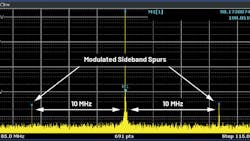Optimizing Power Systems for the Signal Chain (Part 1) (Download)
The increasing volume of data collected, communicated, and stored in everything from 5G to industrial applications has expanded the performance limits of analog signal-processing devices, some into the gigasamples per second. As the pace of innovation never slows, the next generation of electronics solutions will lead to further shrinking in solution volumes, increasing power efficiency, and greater demand for better noise performance.
One might assume that the noise produced in the various power domains—analog, digital, serial digital, and digital input-output (I/O)—should be simply minimized or isolated to achieve optimum dynamic performance. Chasing the absolute minimum in noise can be a study in diminishing returns, though.
